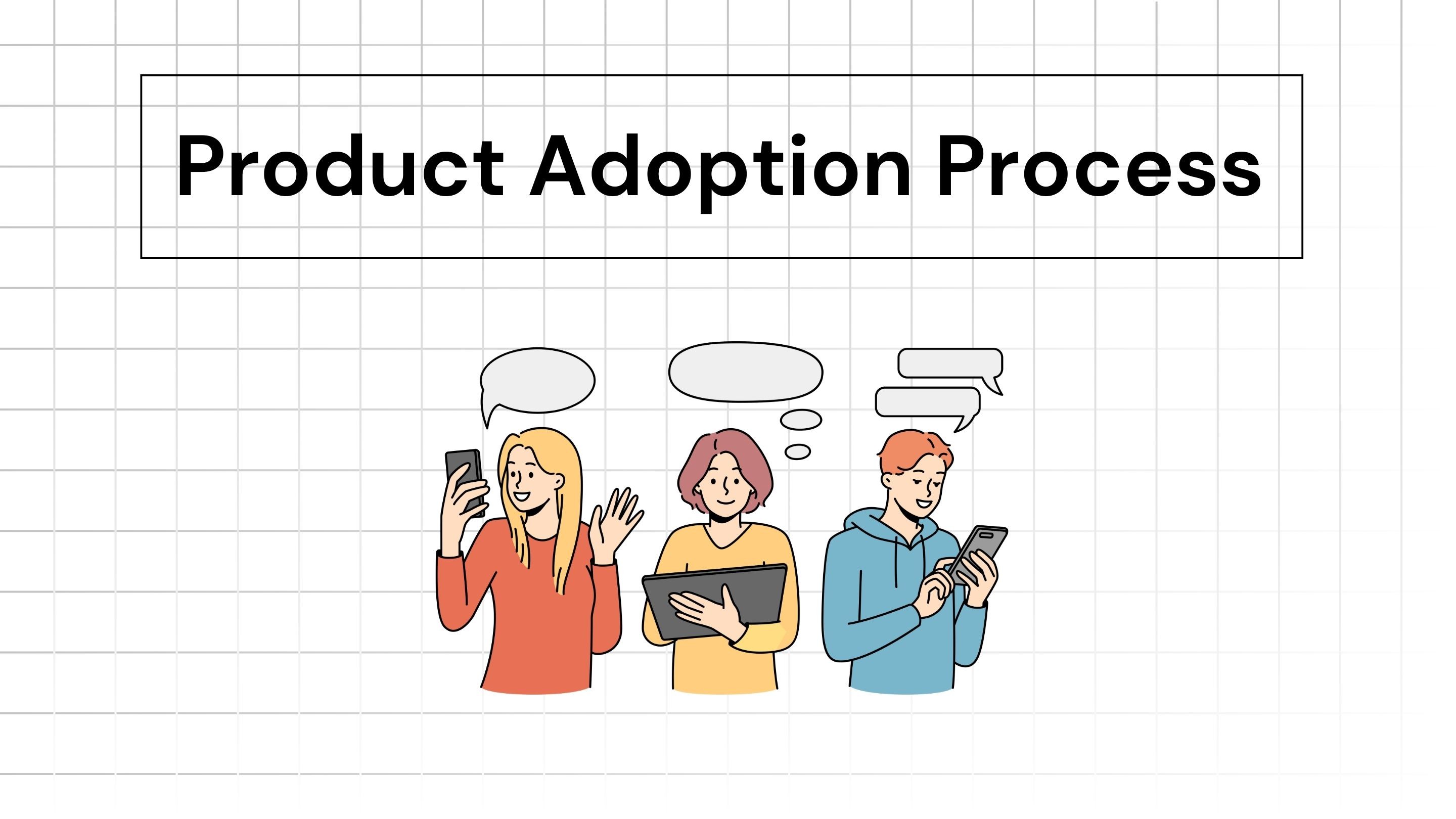
Iterate AI
Jan 18, 2025
The product adoption process involves the stages that individuals or businesses go through before fully embracing a new product. It starts with Awareness and ends with Adoption. You would call a user an adopted user when they pass an activation point (more on this below).
Understanding the audience in different stages of the process can help companies strategize to push the audience to adapt to their product. Let’s explore the product adoption process in detail.
What is the Product Adoption Process?
The product adoption process refers to a consumer's stages before deciding to use a product regularly. These stages capture the psychological and behavioral transitions.
The 6 Stages of Product Adoption
Here are the 6 common stages of product adoption:
Awareness
At this stage, potential customers become aware of the app’s existence. Effective marketing and advertising campaigns play a crucial role in creating visibility. However, awareness alone doesn’t guarantee interest or engagement. In this stage, people have to recognize or resonate with the problem you are solving and should know you are a possible solution.
How to improve: Increase visibility through targeted in-app advertising, app store optimization, and collaborations with influencers or tech reviewers to create buzz around the app.
Interest
Once consumers are aware of the app, they want to explore and experience it. This is the entry point to your app. They may seek more information, explore features, read reviews, or compare it with alternatives. At this point, app store descriptions, user testimonials, and your presence in software review pages are your key tools.
How to improve: Provide clear and engaging app descriptions, create demo videos highlighting key features, and ensure high-quality user reviews to build trust and interest.
Evaluation
In the evaluation phase, consumers weigh the app’s benefits against its costs and competitors. This decision-making process often involves exploring free features, comparing them with similar apps, or reading user experiences. Product marketing collaterals take the limelight from here with their battle cards and USP decks.
How to Improve: Highlight unique features in the app store listing, showcase competitive advantages, and provide easy access to FAQs or support for user queries.
Trial
The trial stage allows consumers to experience the app firsthand. Whether it’s a free trial, limited-access version, or freemium model, this step helps users assess its practicality and benefits. A seamless onboarding experience can significantly influence their perception.
How to Improve: Design a smooth onboarding process where they can experience the value of the product quickly, provide ample integrations and implementation support. Offer proactive in-app support to ensure a positive trial experience.
Activation
Activation refers to the moment a customer realizes the value of the app and takes meaningful action, such as completing the setup or using a core feature. This stage bridges the gap between trial and regular usage.
How to Improve: Create intuitive onboarding flows, use push notifications to guide users to key features, and provide tooltips or guided tours to demonstrate the app’s value to improve activation rate.
Adoption
Finally, if the activation phase meets or exceeds expectations, consumers fully adopt the app, integrating it into their daily routines or workflows. Consistent performance and excellent customer support are essential to sustaining this stage.
How to Improve: To better your adoption rate engage users with personalized notifications, and maintain robust in-app support channels to build long-term loyalty.
Types of Adopters
Consumers don’t adopt new products at the same pace. According to the Diffusion of Innovations theory by Everett Rogers, which explains how innovations spread through societies, adopters can be categorized into five groups. Rogers’ theory has been widely applied in various fields, including marketing, healthcare, and technology, to predict and influence adoption rates.
Innovators: These are risk-takers who are eager to try new products and technologies.
Early Adopters: Visionaries who see the potential in new solutions and influence others.
Early Majority: Pragmatic users who adopt a product once it has proven its value.
Late Majority: Skeptics who require significant reassurance and evidence before adopting.
Laggards: Conservative consumers resistant to change and the last to adopt.
Factors Influencing and Strategies for Product Adoption
Several factors determine how quickly and effectively a product is adopted, and businesses can leverage these factors to their advantage through targeted strategies:
Relative Advantage: Products that significantly outperform existing solutions are more likely to be adopted. Strategy: Clearly communicate the unique benefits and value propositions of your product through marketing and demonstrations.
Compatibility: Alignment with users’ needs and values enhances adoption. Strategy: Conduct market research to tailor the product’s features and messaging to resonate with the target audience.
Complexity: The easier a product is to understand and use, the faster it is adopted. Strategy: Simplify user interfaces, provide tutorials, and invest in intuitive design.
Trialability: The ability to test a product before committing builds confidence. Strategy: Offer free trials, samples, or limited-time access to the product.
Use Iterate AI to View Product Analytics in Different Product Stages
You need reliable data to strategize for high adoption rates. Product Managers delay setting up product analytics as they have heavy dependency on developers to write the code. Not anymore!
With Iterate AI, we enable you to plan and create events and get the code to be used in instrumentation. Your developers don't need to write code from scratch, instead they can just review it for your making it 80% faster. Learn more in our demo.
